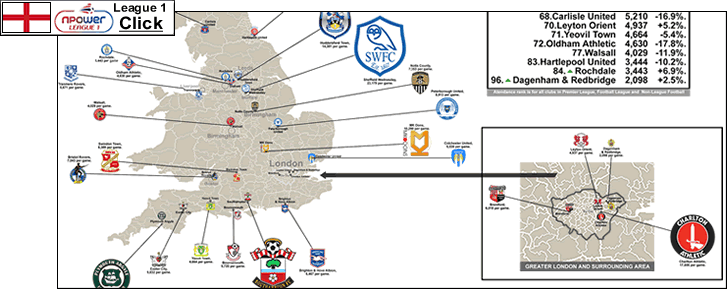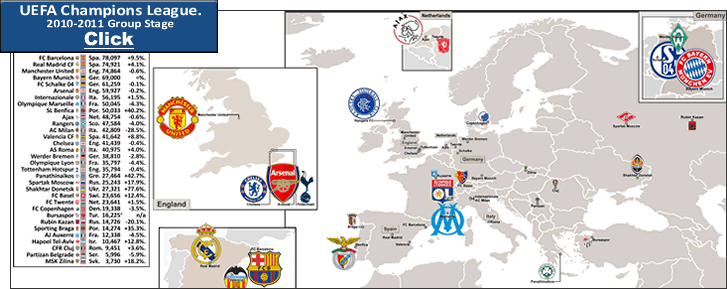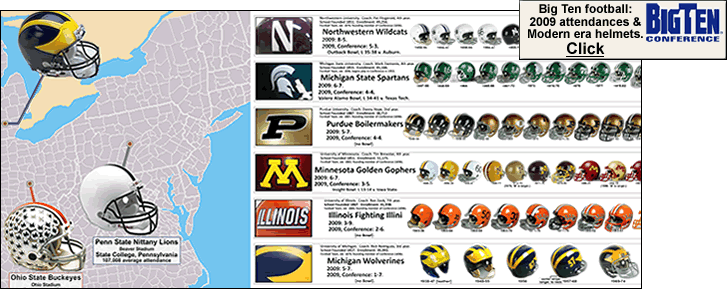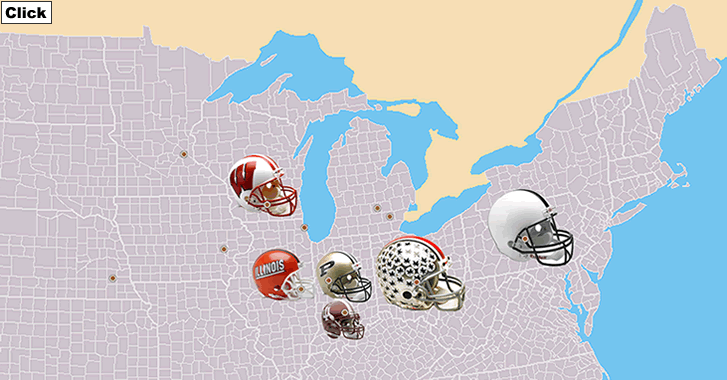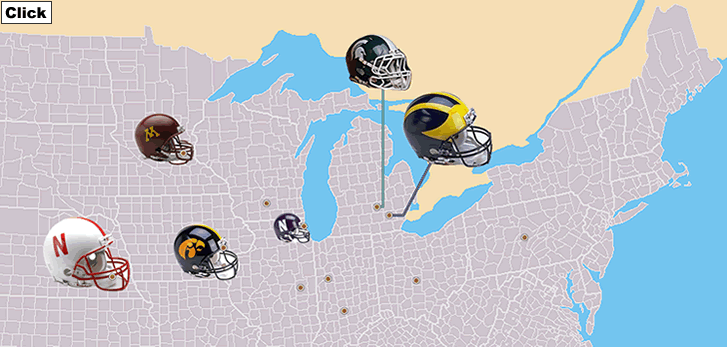Please note: I have made a more “recent” map-and-illustrated-post of the CHL that I am guessing would be more enjoyable to read than this one (seeing as how it shows a more updated map and is chock-full of illustrations on teams and their arenas and hometowns). Click on the following link for that,
Canadian Hockey League: location maps for WHL, OHL, and QMJHL teams (60 teams) and 2011-12 attendance data. Plus the top 3 highest drawing teams, the top 10-highest percent-capacities, and the Shawingan Cataractes – the 2012 CHL Memorial Cup winners.
.
.
.
.
.
.
.
.
.
.
.
.
.
.
.
.
.
.
.
.
.
.
.
.
.
.
.
.
.
.
.
.
.

Canadian Hockey League
…
I made this map because a viewer asked for a map of all 3 CHL leagues on one map, here (40th comment). At first, I didn’t think I would be able to fit in team logos, because there are so many teams in a relatively small area in southern Ontario Province. I solved that problem by including an enlarged map segment of that region at the lower left of the map page.
…
The Canadian Hockey League is an umbrella-organization for the 3 Canadian major junior hockey leagues, the Western Hockey League (WHL), the Ontario Hockey League (OHL), and the Quebec Major Junior Hockey League (QMJHL). The leagues are the top echelon of junior hockey on Canada and are for players aged 16 to 20 years old (there can exceptions made for young phenoms being allowed to play, but this has happened just once since the CHL implemented the 16 year old minimum-age rule a few years ago…that player was New York Islander and 2009 #1 draftee John Tavares, who was allowed to play when he was 15). Each team has a European player allotment of 2 players. [see this: {Junior hockey page from en.wikipedia.org}].There are 60 teams in the CHL, with 22 teams in the WHL, 20 teams in the OHL, and 18 teams in the QMJHL.
There are 51 Canadian-based teams in the CHL, and 9 teams in the CHL that are based in the United States. The 5 American-based teams in the WHL are from Everett, Washington; Seattle, Washington; Kennewick/Pasco/Richland, Washington; Spokane, Washington; and Portland, Oregon. The 3 American-based teams in the OHL are from Saginaw, Michigan; Plymouth Township, Michigan; and Erie, Pennsylvania. The one American-based team in the QMJHL is from Lewiston, Maine.
There is no inter-league play between the 3 leagues except for the Memorial Cup competition, which is played each May at a different site, and is a round robin tournament made up of the 3 league champions and a fourth team which is the team from the host city. In 2010, Brandon, Manitoba was the host city, meaning that the Brandon Wheat Kings squared off against the WHL-champion Calgary Hitmen, the OHL-champion Windsor Spitfires, and the QMJHL-champion Moncton Wildcats. In the final, Windsor demolished Brandon 9 to 1, and so the Windsor Spitfires were Memorial Cup winners for the second straight season.
One player on that twice-champion Windsor team was the #1 pick in the 2010 NHL Draft, Kingston, Ontario-born LW Taylor Hall, who was selected by the Edmonton Oilers. [2010 NHL Entry Draft, here (en.wikipedia.org).]
So I know a few of you are asking, “what do CHL players get paid?”. Well, they get paid a per deim, or basically meal money, which amounts to around $70 to $100 a week; and the families that some players are staying at [ie, being billeted at] get a little money. And, significantly, the players get full college scholarships to Canadian universities (players get a year’s tuition paid for each season they play in the CHL). The NCAA considers the CHL a “pro league”, so players have to decide at a pretty young age (14-15 years old) if they are going to play in the NCAA hockey system or the Candadian Hockey League. Because if they play in the CHL and then decide they do want to play in American college hockey, they will not be allowed to get a scholarship, because the NCAA considers that miniscule meal money to be payment as a professional. From this thread at the HF Boards, it is evident that some of the top prospects in the CHL are getting more than that meal money, though, and are being paid under the table {see entries 11 through 16, here, at ‘How much do juniors make in OHL, etc?’ thread from May, 2008 @ hfboards.com}. Entry #13 names names, and of the 5 OHL teams that the poster names, London, Kitchener, Windsor, Brampton, and Ottawa, four of those teams are in the top eight highest-drawing teams in the CHL (Brampton is the exception). So you can see how luring top-shelf players with some under the table payments has become a part of some higher-drawing teams’ business strategy. Why it isn’t being punished might be explained by the following link below.
There might be a reason all this under-the-table paying of exceptional players is being turned a blind eye by Canadian authorities…and that is the fact that the major junior leagues in Canada are competing with American universities for players. See this article from the PipelineShow.blogspot.com, from December 15, 2009, by Dean Willard, ‘[Executive Director with College Hockey, Inc.'s] Paul Kelly: CHL teams are paying players under the table‘. Kelly accuses CHL teams of targeting American players for the under the table pay arrangements.
…
I got the 2009-10 attendance figures from this site, http://www.mib.org/~lennier/hockey/ (Han’s Hornstein’s Hockey Attendance, Schedules, and Standings Pages).
Thanks to the contributors to the pages at en.wikipedia.org, Canadian Hockey League.
Official site, http;//www.chl.ca
Western Hockey League, http://www.whl.ca/
Ontario Hockey League, http://www.ontariohockeyleague.com/
Ligue de Hockey Junior Majeur du Québec [Quebec Major Junior Hockey League], http://www.lhjmq.qc.ca/
